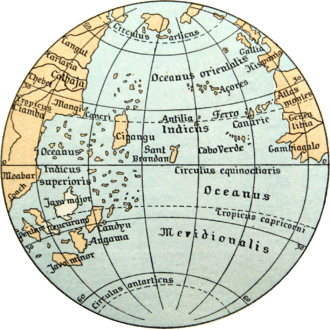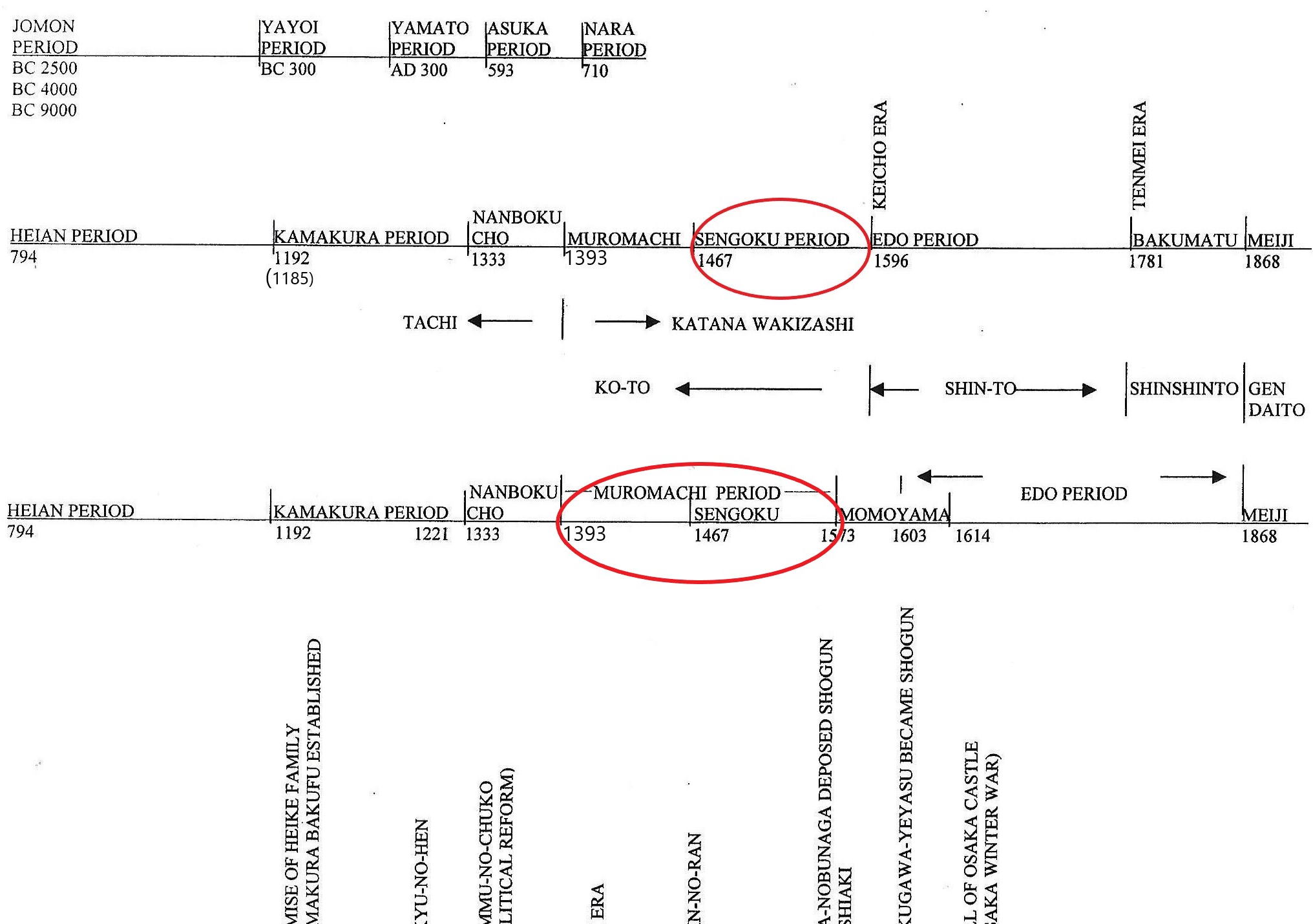Chapter 56 is a detailed part of chapter 22 Sengoku Period History. Please read chapter 22 Sengoku Period History before reading this chapter.
The circle above indicate the time we discuss in this section
22| Sengoku Period History (戦国時代歴史) explained how we separated the timeline based on political history and sword history. The center timeline above shows the Sengoku Period (戦国時代) ends in 1596 for sword history.
1596 is the beginning of the Keicho (慶長) era. The swords made in and after the Keicho era are called Shin-to (new sword), and swords before the Keicho era are called Ko-to (old sword). Therefore, the beginning of the Keicho era is the dividing line. The swords made during the Keicho time is technically Shin-to, but they are specially called Keicho Shin-to.
22| Sengoku Period History (戦国時代歴史) described the overview of the Sengoku Period. At the beginning of the Sengoku Period, 30 or so small Sengoku Daimyo (warlord) fought fiercely with each other. They allied with a neighboring territory on and off and sometimes betrayed each other. The stronger Daimyo took over weaker ones’ territories. Little by little, the number of Daimyo became lesser. The names of known powerful Daimyo are Imagawa Yoshimoto (今川義元), Takeda Shingen (武田信玄), Uesugi Kenshin (上杉謙信), Hojo Soun (北条早雲), Oda Nobunaga (織田信長), Tokugawa Ieyasu (徳川家康), Toyotomi Hideyoshi (豊臣秀吉). Their final goal was to defeat others and advance to Kyoto (京都) to be the supreme political power.
Oda Nobunaga (織田信長) defeated Imagawa Yoshimoto in Okehazama (桶狭間)
Around 1560, Imagawa Yoshimoto (今川義元) controlled a significant part of Suruga (today’s Shizuoka prefecture. See the map below for the location). He was a powerful Sengoku Daimyo who was big enough to be the top ruler of the country.
Imagawa clan decided to advance his army toward Kyoto to take over the government. He took 25,000 men troop with him. On his way up to Kyoto, they needed to pass Owari (尾張: Aichi prefecture today. See map below for the location), Oda Nobunaga’s territory.
Oda Nobunaga (織田信長) was still a young man who had much less means than Imagawa Yoshimoto. It was quite apparent that there was no chance for Oda Nobunaga to beat Imagawa. He had just become the head of Owari after his father’s death. Also, at that time, Nobunaga was called “The idiot of Owari” because of his eccentric behaviors (he was actually a genius).
Not too many people had much confidence in him. Among Oda vassals, some insisted on just staying inside the castle instead of going out and fighting since Nobunaga managed to gather only 3,000 men. But in the end, to everyone’s surprise, the Oda side won. Here is how it happened.
While Imagawa Yoshimoto was advancing, Nobunaga scouted which route Imagawa would take. Imagawa’s side was sure to win this easy battle since the Oda clan was small, and the head of the clan was an idiot. Imagawa troops decided to stop and rest in a place called Okehazama. The road going through Okehazama was long and narrow. Knowing Imagawa troop would come this way, Nobunaga sent out his men disguised as farmers and offered food and sake to Imagawa soldiers. While they were having a good time, Oda Nobunaga made a surprise attack on the Imagawa troop.
On top of that, all of a sudden, it began raining heavily. The rain was so heavy that the Imagawa troop could not even see the Oda troop was coming. In the end, Imagawa Yoshimoto was killed by the Oda side in the battle. After this, the Imagawa clan declined.
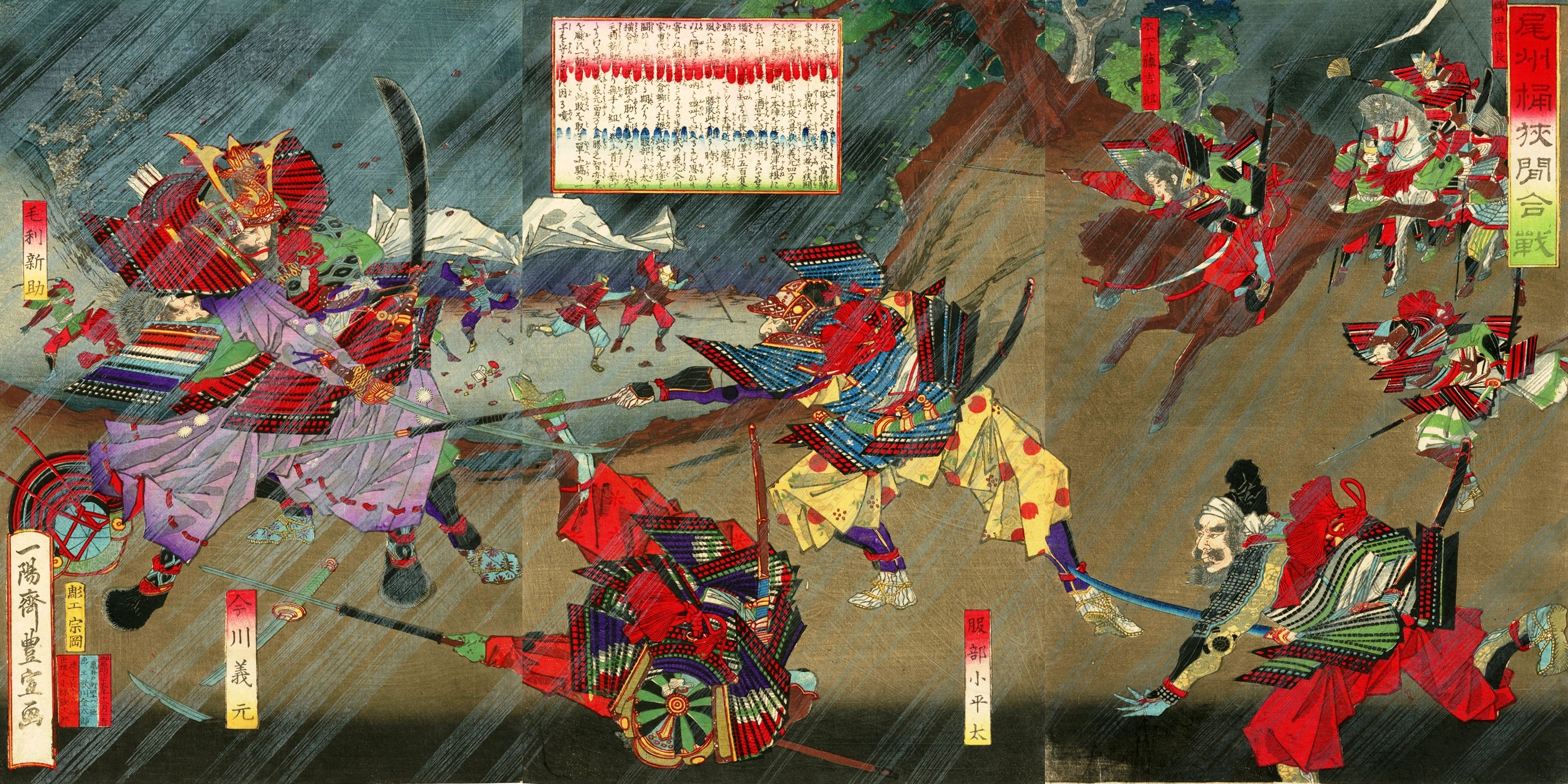
Bishu Okehazama Gassen (備州桶狭間合戦) by Utagawa Toyonobu (歌川豊信) Public Domain (http://morimiya.net/online/ukiyoe-big-files/U896.html)
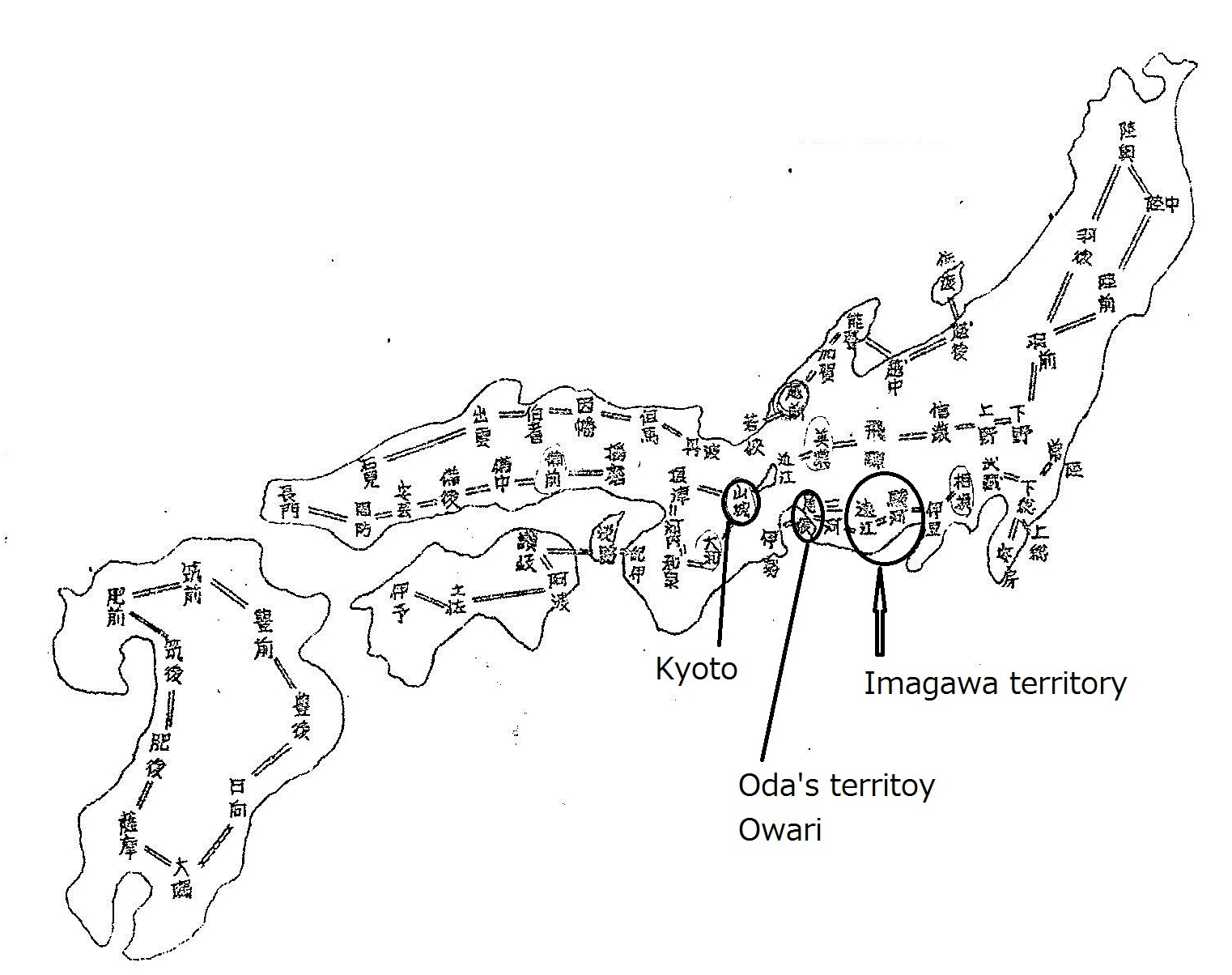
Oda Nobunaga(織田信長) and Akechi Mitsuhide(明智光秀)
After the battle of Okehazama, the Oda clan grew bigger rapidly. Oda Nobunaga became the primary power. While his reign, he did several cruel things like burning Enryaku-ji Temple (延暦寺) and killing many people, including ordinary people, yet his economic measures encouraged commercial activities.
Things were going somewhat smoothly for Nobunaga late in his life. But in 1582, Nobunaga was killed by his own top vassal, Akechi Mitsuhide (明智光秀), at Hon’nou-ji (本能寺) Temple in Kyoto. Nobunaga was 49 years old.
A few theories about why Akechi attacked and killed Nobunaga, but we don’t know what exactly happened. One speculation is Akechi had a grudge against Nobunaga. There were many incidents where Nobunaga mistreated Akechi. Another is that Akechi saw a chance to attack Nobunaga (Nobunaga was with a very few men on that day) and took the opportunity. The other is: Shogun Ashikaga Yoshiaki (足利義昭) and his surroundings ordered Akechi to kill Nobunaga since Akechi had once worked under him. Shogun Yoshiaki was afraid that Nobunaga would become too powerful. More theories go on. We don’t know the real reason; we still debate over it. It is one big mystery of Japanese history.
After this happened, the news was relayed to Toyotomi Hideyoshi, a counterpart of Akechi under Nobunaga. At that time, Hideyoshi happened to be in Bicchu (備中, Okayama prefecture today), which was about 230 KM (143 miles) away from Kyoto (See the map below). Hideyoshi quickly returned to Kyoto with his troop to avenge his master against Akechi and killed him.
Here is another mystery. The time between Nobunaga was killed, and the time Akechi was killed by Hideyoshi was only ten days. Hideyoshi was 230 KM (143 miles) away. There were many mountains and rivers in between. That means in 10 days, Hideyoshi received the information of Nobunaga’s death, packed up hurried back 230 KM (143 miles) to Kyoto with his large number of soldiers and fought against Akechi and killed him. Their means of transportation at the time were minimal. Even though Hideyoshi had a communication route established between Nobunaga’s inner circle all the time, it is an amazing speed. There are also speculations that Akechi and Hideyoshi were behind together (?) or some other secret plot behind the incidents.

After Hideyoshi killed Akechi, Hideyoshi cleverly maneuvered his way up to the top of the power. While Hideyoshi was in charge, he mined a large amount of gold from the gold mines he possessed. There is a record stating that Hideyoshi buried a vast amount of gold somewhere. But we have never found it yet.
Hideyoshi was a poor farmer’s son who became the most powerful man in the country. His success story fascinates the Japanese. Nobunaga, Hideyoshi, and Tokugawa Ieyasu are the three most depicted subjects on TV programs and movies. After Hideyoshi died of natural causes, Tokugawa Ieyasu became Shogun, and the Edo period started.
The reference source *Rekijin.com/?p=31448-キャッシュ *Bushoojapan.com/scandal/2019/06/02/51145-キャッシュ


 My photo May 2019,
My photo May 2019,
 My Japanese room
My Japanese room

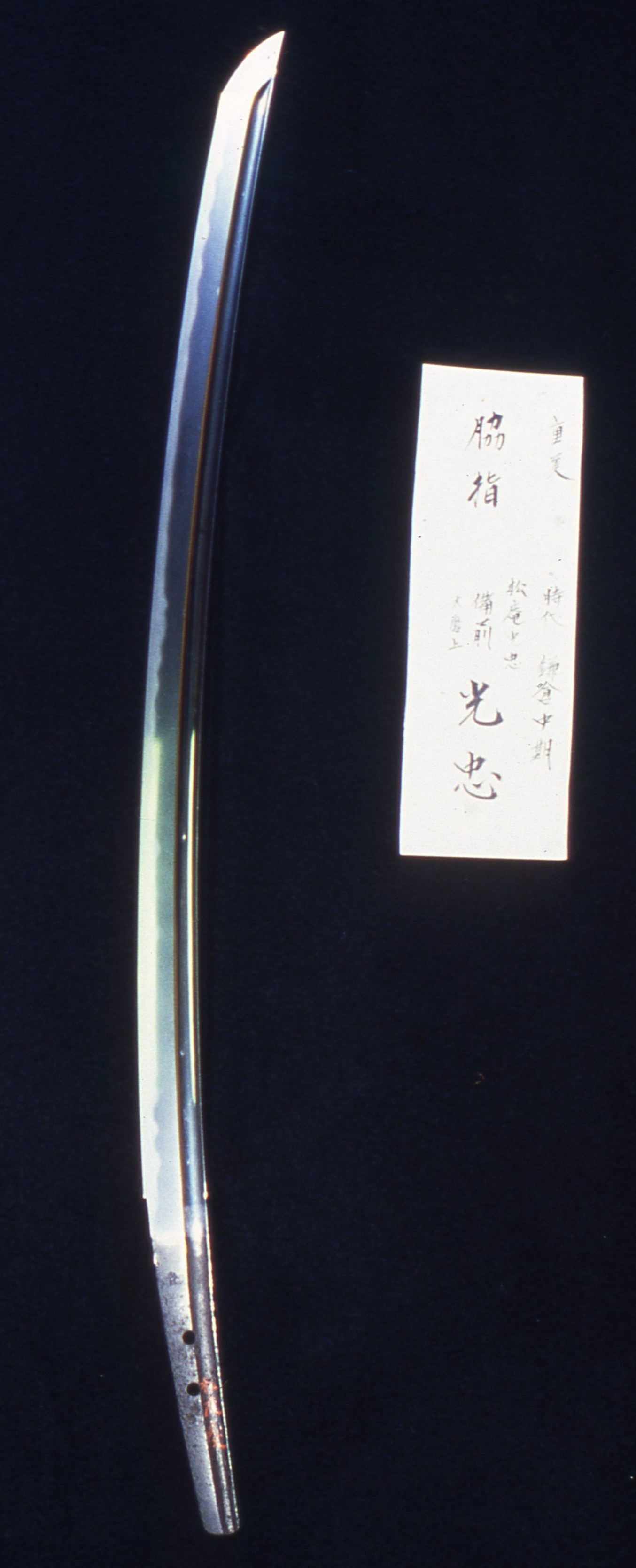 Osafune Mitsutada (Juyo Bukazai) Osafune Mitsutada (Juyo Bunakzai)
Osafune Mitsutada (Juyo Bukazai) Osafune Mitsutada (Juyo Bunakzai)
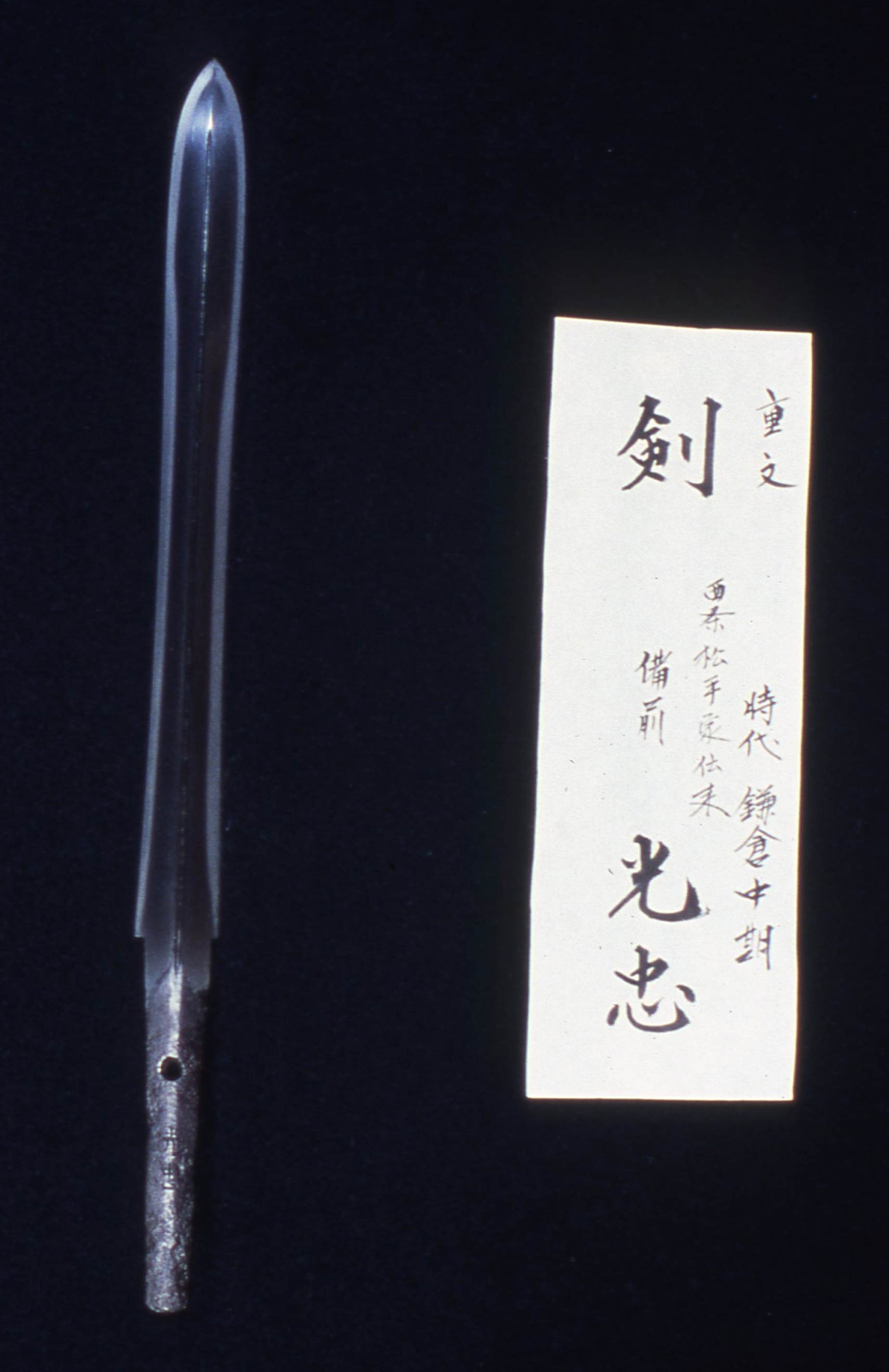 Osafune Mitsutada (Juyo Token) Osafune Mitsutada(Juyo Bunkazai)
Osafune Mitsutada (Juyo Token) Osafune Mitsutada(Juyo Bunkazai)
 File:Commodore-Perry-Visit-Kanagawa-1854.jpg From ja.wikipedia.org/wiki/黒船 Public Domain
File:Commodore-Perry-Visit-Kanagawa-1854.jpg From ja.wikipedia.org/wiki/黒船 Public Domain
